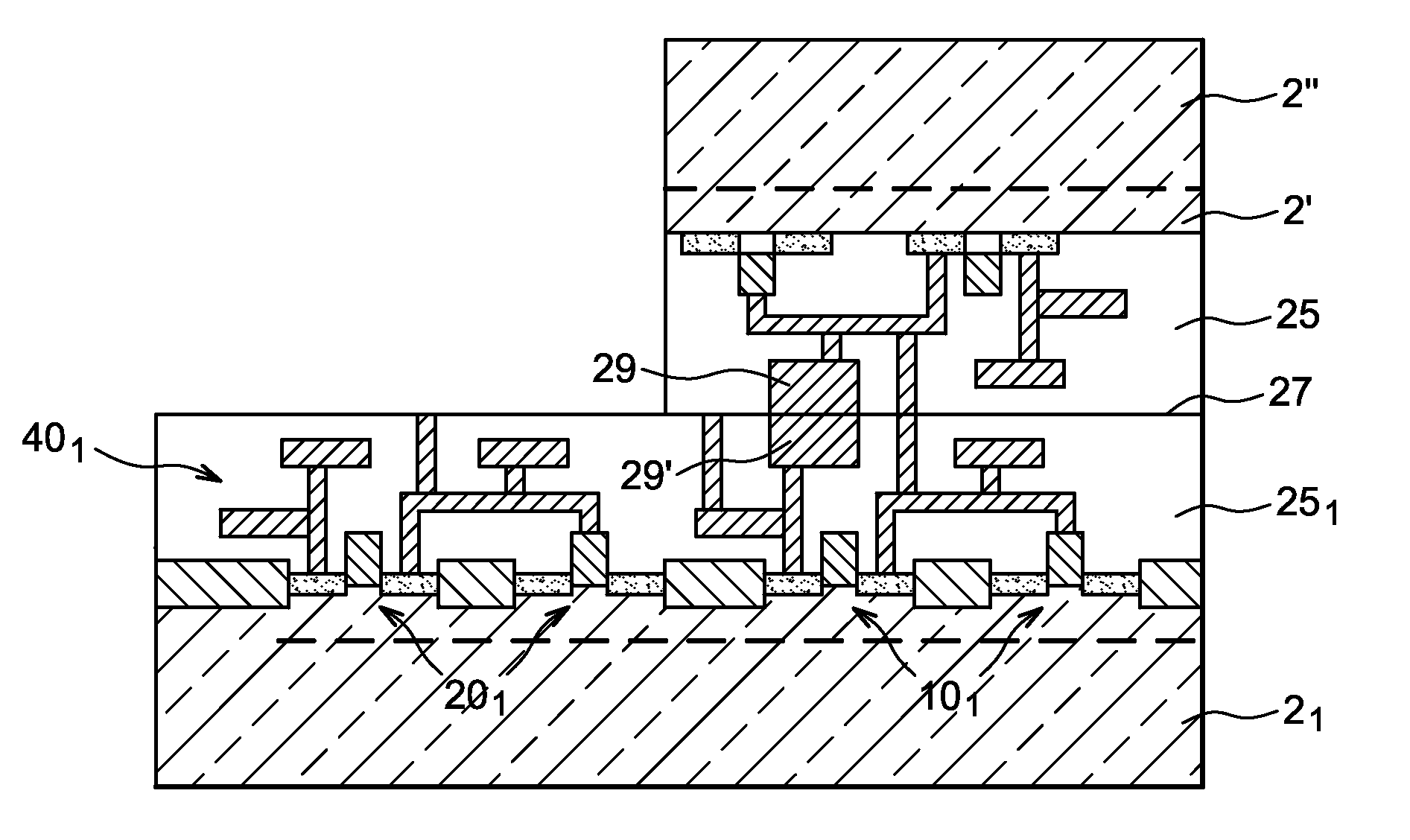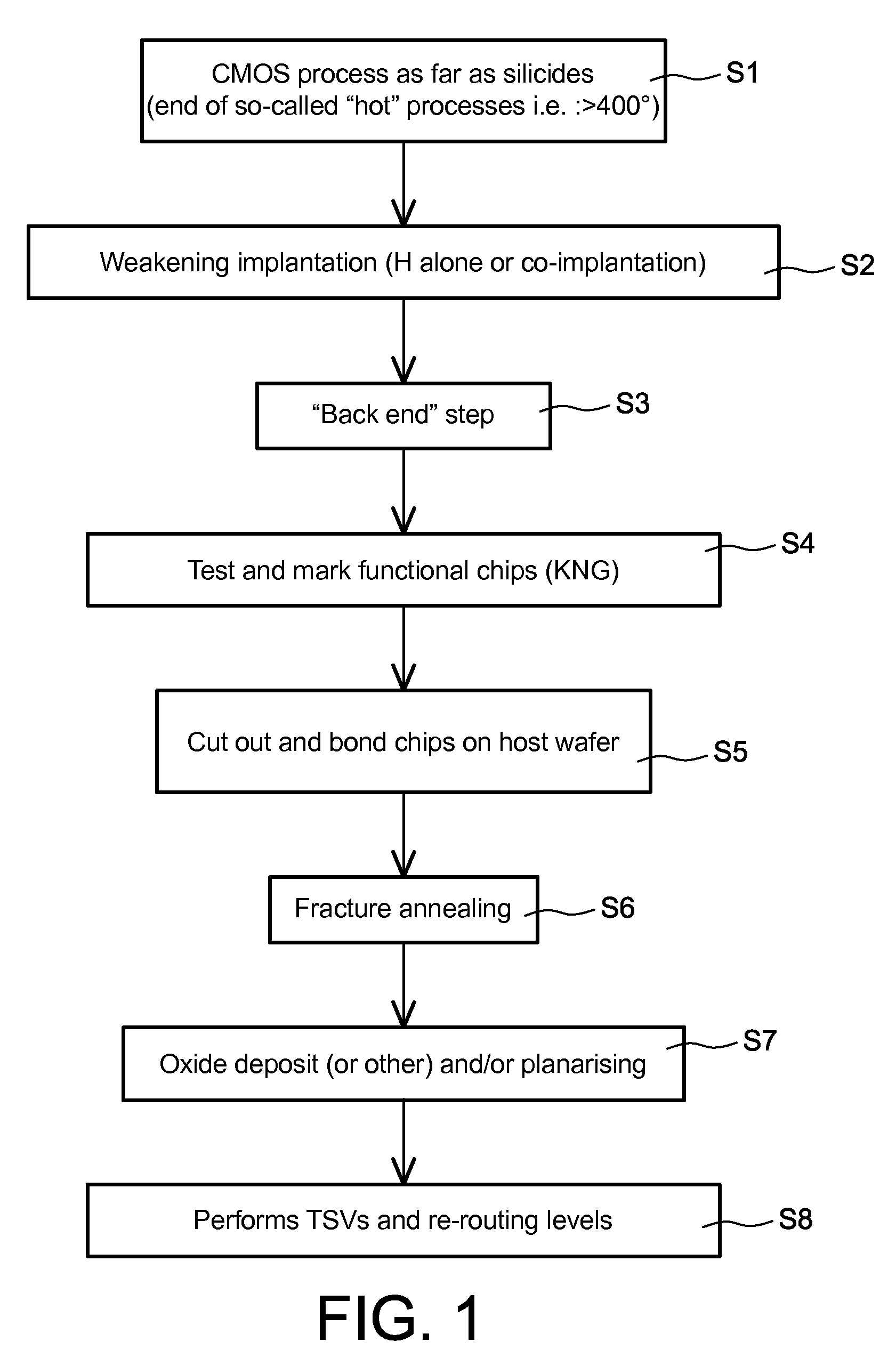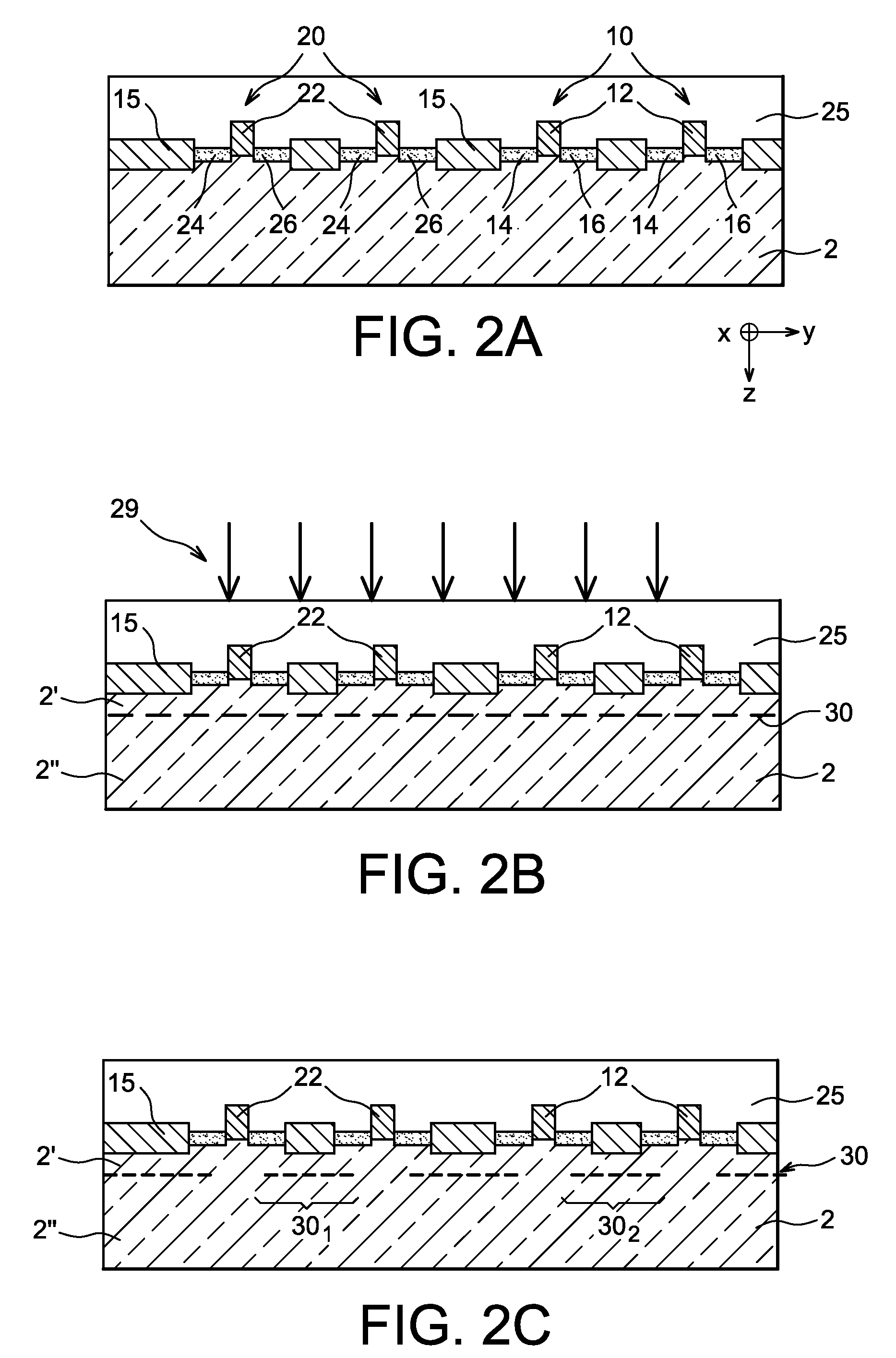Method for transferring chips onto a substrate
a technology of substrate and chip, applied in the direction of basic electric elements, electrical apparatus, semiconductor devices, etc., can solve the problems of difficult to purchase boards from different suppliers, difficult to assemble, and serious limitations
- Summary
- Abstract
- Description
- Claims
- Application Information
AI Technical Summary
Benefits of technology
Problems solved by technology
Method used
Image
Examples
Embodiment Construction
[0040]FIG. 1 shows the steps in a method according to the invention.
[0041]Each of these steps is shown in a more detailed manner within the framework of a simple example, the chaining in FIGS. 2A-2H. This example in FIGS. 2A-2H will be described in parallel with FIG. 1 and is deliberately simplified to facilitate understanding.
[0042]This description relates to the production of CMOS components.
[0043]In a first step (S1), a plurality of CMOS components 10, 20 each comprising a gate 12, 22, a drain and a source made by doping is made in or on a substrate 2 made of a semiconducting material, for example silicon, and a drain silicide 14, 24 and a source silicide 16, 26 respectively are then formed on top of said drain and said source (FIG. 2A). For example, each of these silicides is made from a Pt, or Pd, or Ni, or Co, or Ti silicide, . . . FIG. 2A also shows transistor isolation oxides 15 (STI oxide). A dielectric 25 (called PMD or “Pre Metal Deposition”) is formed and is planarised o...
PUM
 Login to View More
Login to View More Abstract
Description
Claims
Application Information
 Login to View More
Login to View More - R&D
- Intellectual Property
- Life Sciences
- Materials
- Tech Scout
- Unparalleled Data Quality
- Higher Quality Content
- 60% Fewer Hallucinations
Browse by: Latest US Patents, China's latest patents, Technical Efficacy Thesaurus, Application Domain, Technology Topic, Popular Technical Reports.
© 2025 PatSnap. All rights reserved.Legal|Privacy policy|Modern Slavery Act Transparency Statement|Sitemap|About US| Contact US: help@patsnap.com



